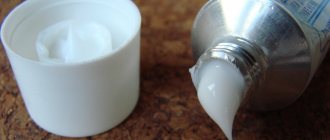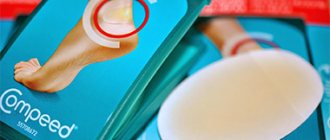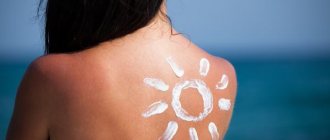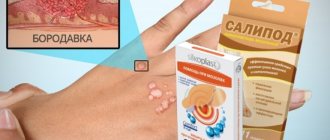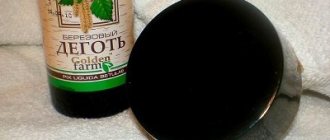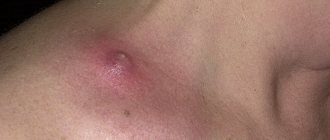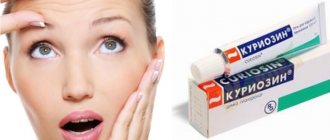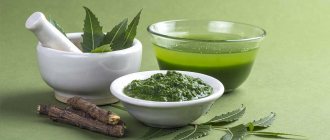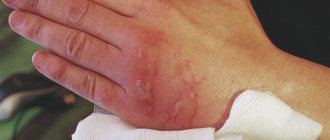The burn patch is an easy-to-use drug. It looks like adhesive tape or a plastic mass on a backing, impregnated with a medicinal composition. May contain natural rubber, antioxidants, antimicrobial and wound-healing components. Some types of burn patches contain pain-relieving additives. Used to protect burned skin from dirt, bacteria, viruses and other pathogens. Unlike bandages, patches are changed once every 2-3 days. Their use prevents purulent complications from burns - abscesses, abscesses.
When are burn patches indicated?
An anti-burn plaster is a dressing material with an adhesive base, the outer layer of which is a breathable film. It is impregnated with drugs that have a number of pharmacological properties:
- anti-inflammatory;
- antiseptic;
- decongestants;
- wound healing.
Used to provide first aid for 1st and 2nd degree burns. Unlike regular adhesive tape, anti-burn adhesive tapes do not restrict air flow to the wound. Gas exchange in tissues is necessary for the regeneration of the epidermis and deeper layers of the skin.
Upon contact with the burn surface, the components of the patch convert the serous fluid, or exudate, into a gel. It is used for:
- cooling the affected area;
- reducing pain in damaged skin;
- protecting the wound from pathogens;
- accelerating skin regeneration.
The patch is used topically for relatively minor burns on the arms, legs and areas of the body that come into contact with clothing. It is strictly not recommended to use anti-burn tapes for deep injuries of 3B and 4 degrees. Such injuries are treated only by combustiologists in burn centers and hospitals.
Pros of patches
The special patch performs the following functions and has the following properties:
- It cools and therefore relieves pain.
- Soothes itching.
- Creates the necessary humid environment and prevents the appearance of bubbles.
- Convenient for everyday use, it isolates the wound from water, but allows air to pass through.
- Lightweight and easy to use, unlike ointments and gels, it does not require a protective bandage.
- It does not stick to the wound, can be easily removed, but is securely fastened and will not accidentally fall off.
- How to use the patch correctly.
Any patch after burns comes with instructions. However, there are no significant differences in the use of patches of different brands. Step by step usage looks like this:
- Immediately after receiving a burn, cool the wound by holding it under running cold water for about 15 minutes.
- Treat with an antiseptic, paying special attention to areas with burst blisters. Beneath them there is a layer of new growing skin, it is reddish, painful, sensitive - you should not use alcohol-based antiseptics (iodine, brilliant green) for disinfection, they are aggressive and can even cause a chemical burn. It is better to take either a solution of potassium permanganate or hydrogen peroxide. It is possible to use disinfectant ointments, such as Dermazin ointment (although this will need to be removed with water or an antiseptic).
- Dry the wound by applying sterile lint-free material (you can use a regular bandage folded in several layers).
- Remove the protective coating from the patch.
- Apply to the affected area, press firmly to secure.
How to use it correctly
The patch for burns accelerates the healing of injured tissue. It is enclosed in a sealed sterile package. To prevent infection from entering the wound, it is used according to the following scheme:
- hands are washed thoroughly with antibacterial soap;
- the affected skin is cooled with running water or a hypothermic bag;
- the wound is blotted with a bandage;
- measure the required length of the patch and cut off a piece;
- remove the protective film and apply adhesive tape to the wound surface.
The dressing material should cover the burn and 1-2 cm of healthy skin around it.
The best anti-burn plasters
There are different versions of patches in pharmacies. Burn plates can be used for various injuries that are accompanied by inflammation and infection. They are suitable for first aid and long-term therapy.
Branolind ointment dressing
This is a mesh bandage that has Peruvian balsam on the surface. It is used as part of the treatment of burns and wounds, but is also considered the best means of caring for wound surfaces. Among the main positive properties of the patch it is worth highlighting:
- accelerates the process of restoration of damaged skin;
- has pronounced antiseptic properties. Protects the wound from penetration of pathogenic microorganisms;
- reduces pain;
- Long-term wearing of the bandage does not cause discomfort, and its removal does not injure the skin.
Important! It is recommended to change the bandage every day. The exception is minor burns, for the treatment of which the patch can be changed once every 2-3 days.
Plaster Cosmos Hydro-Active
These hydroactive burn patches have a hypoallergenic and breathable base. They can be used for grade 1 and 2 superficial damage to the skin. The Cosmos Hydro-Active dressing has the following features:
- Suitable for all skin areas.
- Does not cause irritation when used.
- There is a two-layer pad that does not stick to the wound surface.
- Protects against penetration of pathogenic microorganisms into the wound.
- It perfectly absorbs exudate that is released from the wound.
- The gel base of the bandage accelerates healing and recovery.
Hydrocoll
Hydrocoll patches are used for stage 1 and 2 treatment. But at grade 3, a bandage cannot be used. The shape and size should be selected depending on the size of the damaged area. Plasters for skin burns have the following advantages:
- there is a semi-permeable top layer, it prevents the penetration of water and pathogenic microorganisms;
- accelerates wound cleansing;
- promotes rapid restoration of damaged skin;
- the smooth edges of the patch provide excellent fixation;
- There is no discomfort when worn for a long time.
For some reason, many people think that the skin burn from the patch will become even worse, and the bandage will not help cope with the damage, and when removed, the cover can be damaged. But this is not so; modern manufacturers offer a variety of bandages that help cope with unpleasant symptoms. On their surface there are special components that accelerate recovery, relieve inflammation, and have an antiseptic effect. But first you should study the popular types of patches and their basic properties.
Other varieties
Modern pharmaceutical companies produce burn patches with various medicinal impregnations.
The most effective remedies for superficial wounds include:
- Chitopran is a sterile biopolymer strip with an adhesive base that stimulates the restoration of burned skin. Used for 1-3A degree burns, frostbite, non-healing wounds, bedsores.
- Hemosorb is a non-woven bandage that quickly absorbs moisture. Used for bleeding burns, severe separation of serous fluid.
- Parapran - an atraumatic patch with paraffin impregnation is available with three drugs. It is used for superficial burns to relieve pain, destroy infection, and cleanse the affected area of dead tissue.
It is recommended to use dressing materials only as prescribed by a doctor in accordance with the instructions.
Plasters for the treatment of burns
The pharmacy chain offers many options for plasters for burn wounds from foreign and domestic manufacturers. Experts recommend using those types that are most permeable to air and do not cause severe fogging of the wound. List of burn plasters:
- "Branolind"
- "Space",
- "Silkoplast"
- "VoskoPran"
- "GelePran"
- "Mepiform."
Different types are similar in action, but differ in the ingredients included in the gel.
"Branolind"
The Branolind burn patch is distinguished by the presence of Peruvian balsam, made from the resin of the tropical balsam tree. It has an antimicrobial effect, cleans the wound well and stimulates regeneration processes due to natural components.
Use during the epithelization stage (healing stage) prevents the formation of rough scars on the skin and makes the burn site less noticeable. A burn patch with Peruvian balsam is also popular after plastic closure of burn skin defects and promotes their good healing. It is kept on the wound for 2-3 days. For instructions on using the Branolind burn patch, watch the video:
"CosmosHydro Active"
Among all the patches, it has the most pronounced moisturizing effect due to the moist “cushion” of gel. The Cosmos burn patch is good to use immediately from the moment you receive burns:
- In grade I, it prevents detachment of the epidermis and the formation of blisters,
- In degree II, it prevents the bladder from drying out and opening, allowing the wound to epithelialize “under the roof,” without the formation of a dry crust.
A positive aspect is also transparency, which allows you to monitor the condition of the burn surface. The patch can be kept on the skin for 3-4 to 7 days.
Hydroactive burn plaster "Cosmos" is contraindicated:
- For deep burns,
- Suppuration,
- Inflammation of the skin around the burn,
- The presence of necrotic tissue in the wound,
- When increased hydration may contribute to deterioration.
"Silkoplast"
Intended for use in the acute period for second degree burns by moisturizing the resulting blisters. The gel polymer contains silver ions, which impregnate the sorption pad. They have an antiseptic effect and promote rapid wound healing. The very thin film and transparency of the material allow you to monitor the condition of the wound.
The peculiarities of using the patch are that it is changed when transparency is impaired and cloudiness appears.
"VoskoPran"
This is a series of patches with various types of impregnation: ointments levomekol, methyluracil, synthomycin, povidone-iodine solutions, miramistin, dioxidin, propolis, vitamins A, E and other ingredients.
Essentially, these are self-adhesive dressings with a therapeutic medicinal effect , well absorbing discharge from the wound. The name of these patches comes from the fact that each of them contains beeswax, which is a healing stimulator.
For an inflamed wound, the bandage is changed every day; for a clean, healing wound, leave it for 3-4 days.
Therapeutic plaster for burns has wider applications. In case of inflammation in the wound, a version with an antibiotic, miramistin, povidone is applied; on granulating surfaces, to speed up healing, those types that contain vitamins, propolis, and methyluracil are used.
"GelePran"
This is a series of anti-burn dressings with various components: lidocaine for pain relief, miramistin for antimicrobial action, silver ions to stimulate healing. The common component of all modifications is hydrogel, which makes up 70% of the volume. It has a pronounced moisturizing effect and can be used for shallow burns.
Do not use for purulent wounds and the presence of necrotic scabs. The residence time on the wound is from 1 to 3 days, it is determined by the turbidity of the transparent structure of the hydrogel.
"Mepiform"
Sterile thin anti-burn dressing made of pure silicone, designed to protect epithelized wounds during scar formation. Gluing such a film protects the tissue from external influences, as a result of which the healing area is not irritated and a rough scar is not formed.
Indications for the use of silicone burn patches are also scars due to the presence of a compression plate in the composition. It puts constant pressure on the protruding scar and, in combination with hydration due to silicone, promotes its resorption. You can wear this patch for up to 7 days, and for scars, up to 14 days. It is not applied to unhealed wounds.
Disadvantages of use
Adhesive plasters for burns have disadvantages that must be taken into account when treating:
- Pollution. The dressing material quickly gets dirty, which increases the risk of microbes entering the lesions.
- Insufficient air access. Some patches have airtight protective layers. Because of this, the skin sweats a lot, and bacteria multiply faster under the bandage.
Sometimes tapes with a hydrogel base cause allergic reactions, as indicated by itching, small blisters around the wound, and redness.
Advantage of treating a burn with a plaster
A special anti-burn patch has a number of positive qualities that positively affect the condition of a burn wound:
- Has a cooling and analgesic effect,
- Protects the wound from exposure to water, and at the same time partially allows air to pass through, allowing it to “breathe”
- Isolates the wound from external contaminants, microbes,
- Contains antiseptic and wound-healing components in the gel composition,
- Creates a certain humidity that prevents the epidermis from drying out,
- Does not stick to the wound surface, but is fixed to the surrounding skin reliably,
- Simple and easy to use, does not require special knowledge of applying dressings,
- Can be used in children and pregnant women.
In order for an anti-burn dressing to perform all of the above functions, it is important to apply it correctly.
Contraindications for use
Products for protecting burned skin are not recommended for use when:
- purulent complications;
- extensive burns;
- pregnancy and lactation;
- proneness to allergies;
- bacterial inflammation;
- dermatological diseases.
In isolated cases, the patches provoke weeping rashes, itching, and redness. If such symptoms appear, dressing material should not be used. Tapes with gel pads are applied to children only on the recommendation of a pediatrician. Also, do not apply a bandage to injured skin at the granulation stage when the wound is healing.
Indications for use of the patch
The patch contains a gel impregnated with medicinal substances with antimicrobial, analgesic, cooling and wound-healing effects. The patch itself is perforated, designed to prevent the accumulation of excess moisture, and has an absorbent pad.
And yet it creates increased humidity in the wound, which is permissible only in certain cases. For these reasons, the indications for use of the patch are as follows:
- Superficial burns of I-II degree, occupying a small area,
- The recovery period after deep burns in the stage of epithelization (covering with the epidermis, when the wound “heals”)
- Small areas of third degree burns after removal of blisters, necrosis in the absence of wound suppuration,
- Rehabilitation after dermatoplasty - skin grafting onto post-burn defects, when it is necessary to create better conditions for healing,
The indications are determined by the doctor, and without his knowledge, the anti-burn patch can only be used in the case of minor first-degree burns.
Anti-burn patches with silver and gel
14.05.201815.06.2018
- 1 Gel patches
- 2 Silver to help
- 3 Burn dressings
If a person has received a thermal burn, you need to treat the wound by putting your hand under a tap with cool water and seal it with a plaster, and sometimes apply a bandage.
Burn plasters can be purchased at any pharmacy. However, they are different.
Each product has one or another distinctive feature - some isolate better, some allow wounded skin to breathe better, and others, which are more “long-lasting”, allow the often painful procedure of changing the patch to be carried out less frequently.
Gel patches
A distinctive feature of gel products is that their main active ingredient is a hydrogel, which consists of seventy percent water. An additional advantage is the transparency of the patch, which allows you to monitor the progress of burn healing. It is also worth paying attention to the fact that this type of anti-burn patch prevents the skin from drying out, nourishing it with moisture.
Representatives of this type of patches on the Russian market:
- The most famous representative is “Silkoplast”. This product is based on a hydrogel and has a sufficient concentration of the active substance to heal serious second-degree burns, and the adhesive plaster for burns has a characteristic feature - when the “filling” stops working, it becomes cloudy. This is a signal that the patch needs to be replaced with a new one if the burn has not yet healed. One package costs 420 rubles.
- A patch with silicone gel has a strong smoothing effect and is capable of smoothing even marks from second-level burns to the surface. Actually, this is its purpose. It heals somewhat worse, but the main drawback is poor adhesion to the skin. For reliable fixation, it is necessary to use a bandage or another type of gel. An example is the “Scar Fx” tool.
The most popular types of gel used in patches are hydrogel and silicone gel.
Silver to the rescue
Of course, silver in its pure form is not used in medicine. However, pharmaceutical companies widely use silver-containing drugs, applied in small quantities between layers of various dressings.
This remedy is used, like other popular drugs, for damaged skin, and it is also effective as a band-aid on a burn wound. It is also worth mentioning the bactericidal properties of silver - in the old days they disinfected water.
Therefore, the beneficial effect of burn patches with silver is rather disinfection.
One of these gels is “Gelepran”. Its main purpose is to treat dry burns. The cost of one patch is 150 rubles. A bonus is that its impregnation, in addition to the silver substance, also includes lidocaine, which helps get rid of pain (temporarily).
Main advantages
Most qualified specialists in the field of dermatology confirm the effectiveness of using the product in question for burns. Do not confuse a regular patch with an anti-burn patch (in the first case there are no special antibacterial components and careful selection of the material). Specific benefits:
- cooling the wound;
- elimination of pain;
- practical and constant care;
- ensuring optimal moisture levels;
- acceleration of the regeneration process;
- preventing the formation of swelling and blisters;
- minimizing itching, peeling;
- antiallergic effect;
- barrier function;
- reliable fixation and easy removal.
Methods of application
For treatment to be successful, burn patches must be applied correctly.
The main indications of the funds are highlighted:
- superficial damage to the skin;
- 1st and 2nd degree burns;
- to speed up rehabilitation after autodermoplasty;
- at home for minor and shallow injuries.
Such medical products can also be used for various cuts, abrasions, bedsores, and trophic ulcers.
Important! In the case of pathology in children, self-medication is contraindicated, since at this age the skin is very delicate and sensitive, and the consequences of injury are much more dangerous to health than in adults.
Each package of the drug contains instructions.
- Wash your hands with soap and treat with antiseptic.
- The affected area should be treated with cold tap water to cool it and remove contamination.
- Carefully dry the area around the wound with a sterile bandage, gauze or clean material without any fibers.
- It is not recommended to use cotton wool or a non-sterile bandage for cleaning and disinfection.
- Before use, peel off the protective layer from the surface of the patch.
- Next, cut out the required size of material in order to close the wound over its entire area.
- Apply the piece to the skin, press down lightly and rub it on top with your palms to evenly fix the product.
For easy removal, first lift one corner of the product and then carefully remove all of the material. In most cases, use continues until the wound is completely healed.
Recommendations! The use of sterile products is recommended until recovery in cases of stage 1 and 2 pathology, but you must constantly monitor the condition of the wound.
How to treat a burn at home
Contraindications and side effects
Despite the fact that the anti-burn patch has proven itself well in the treatment of burns, its use has a number of limitations:
- Deep burns in the initial stages with necrosis,
- Extensive areas of skin damage
- Infected burns with purulent discharge,
- Intolerance to components.
Side effects can develop with the wrong choice of treatment in the form of increased discharge from the wound, as well as in the form of an allergic reaction to the anesthetic, antibiotic and other ingredients included in the composition.
Can a burn be covered with a bactericidal plaster?
For small superficial wounds and abrasions, a bactericidal patch is an ideal remedy, which cannot be said about using it to cover a burn surface. The reason is that a burn wound is always open, devoid of epidermis, and contains areas of burned dead tissue.
Restricting air access when using a bactericidal patch is a favorable condition for the development of pathogenic bacteria, and the wound must “breathe”.
Therefore, you need to use a sterile gauze bandage or a special bandage for burns. In order not to experiment and gain bitter experience in using various patches for burns, it is better to first consult a doctor.
